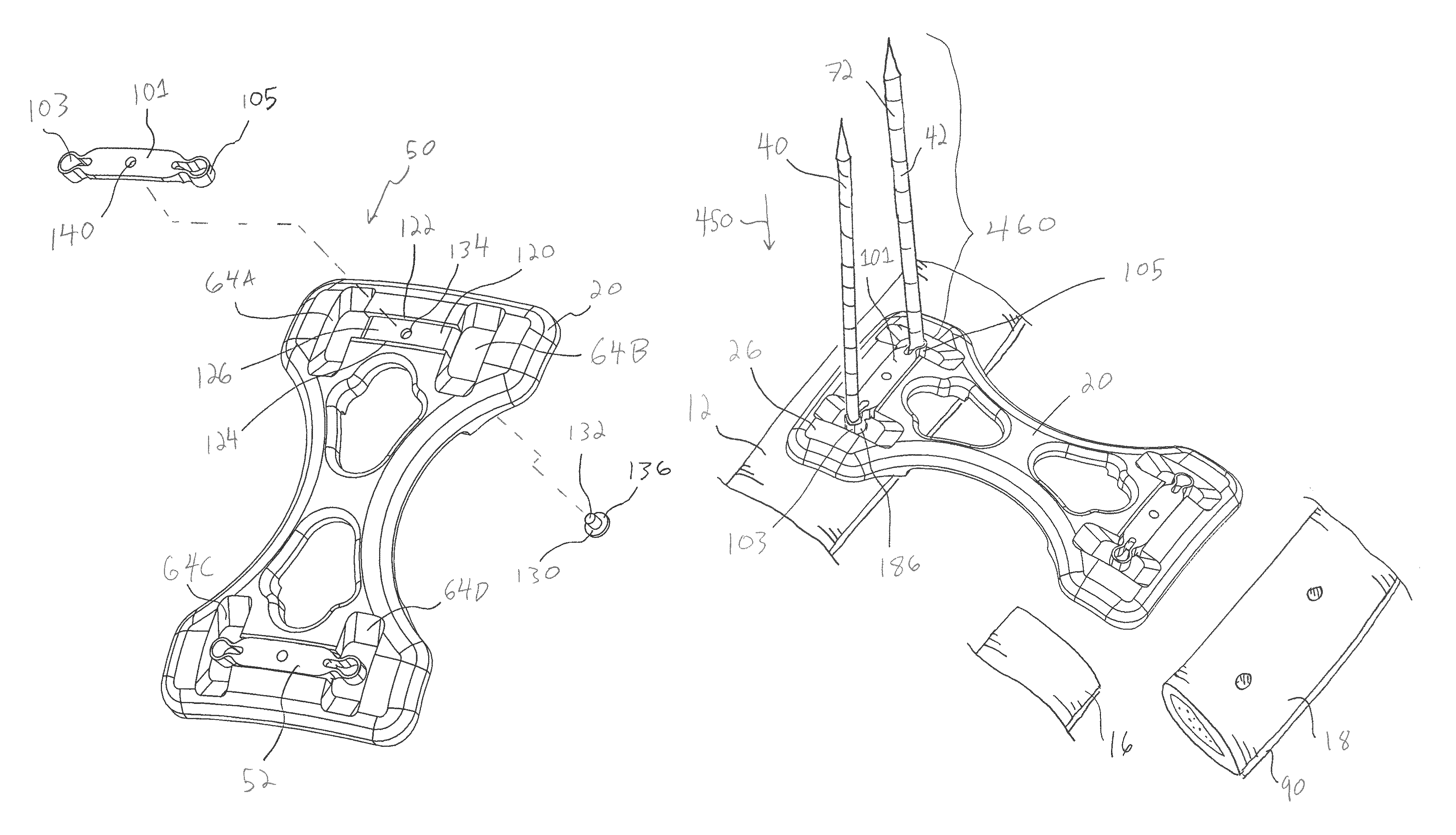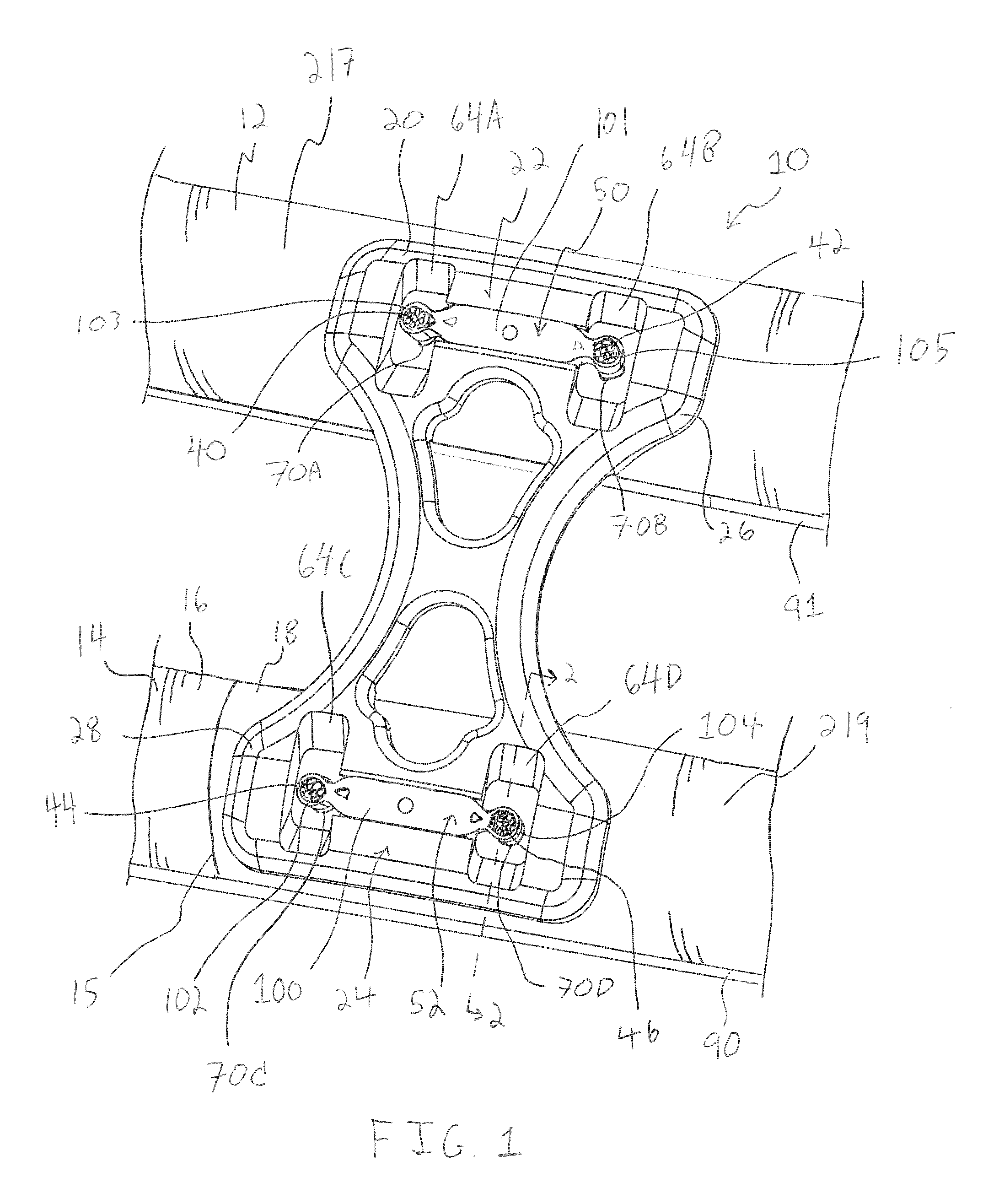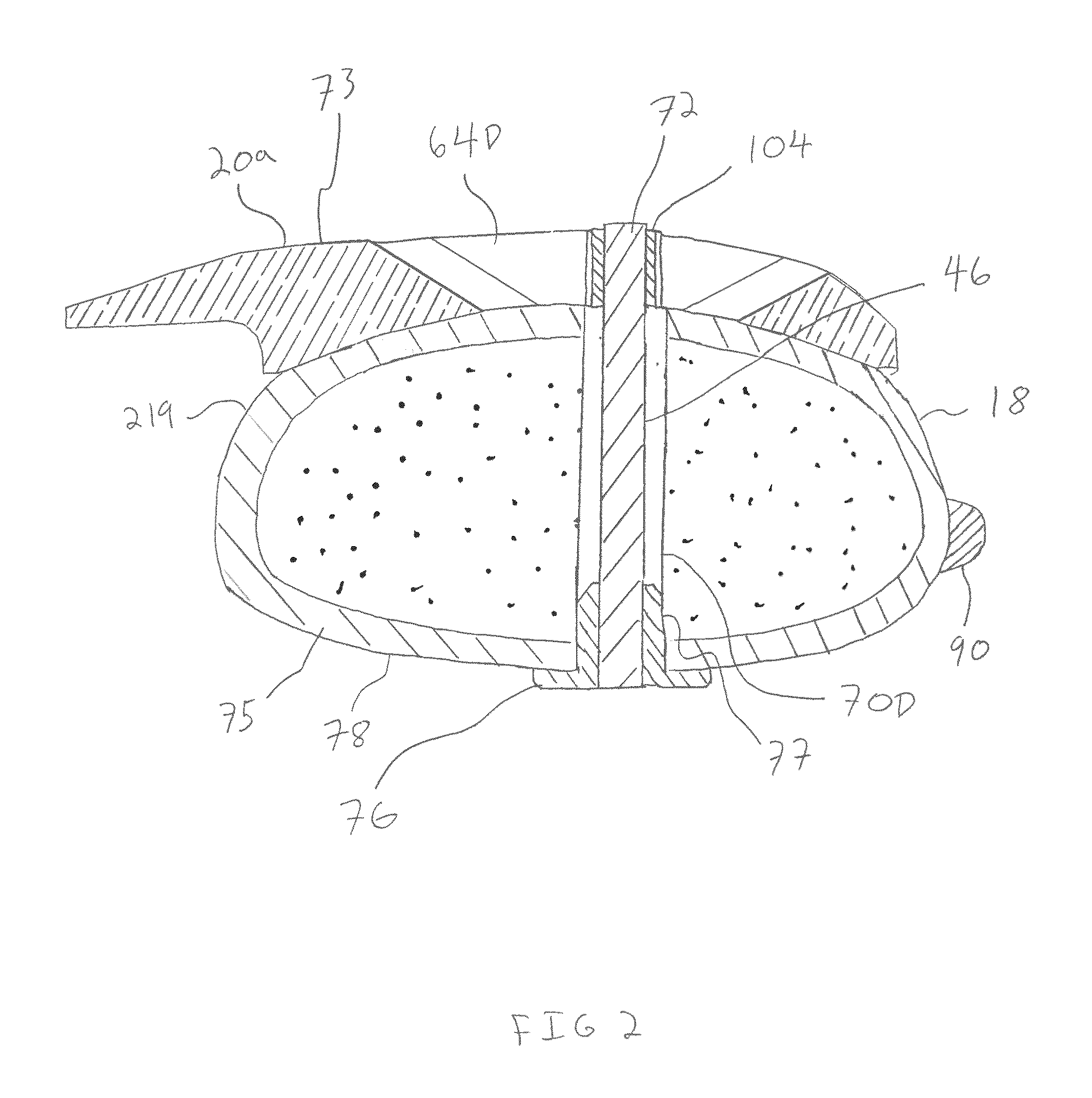Bone plate system and method
a technology of bone plate and rib, applied in the field of bone plate systems, can solve the problems of irritating the tissues within the chest cavity of patients, the portion of the screw shank to extend beyond the rib, and the retracted rib may not return to the original position, so as to achieve rapid and easy approximation
- Summary
- Abstract
- Description
- Claims
- Application Information
AI Technical Summary
Benefits of technology
Problems solved by technology
Method used
Image
Examples
Embodiment Construction
[0086]Referring to FIG. 1, a bone plate system 10 is provided for stabilizing one or more bones, such as ribs 12, 14, after the rib 14 has been cut such as along cut line 15 into two portions 16, 18 as part of a thoracotomy procedure. The bone plate system 10 includes a stabilizing member, such as bone plate 20, sized to extend between the ribs 12, 14 and keep the rib portion 18 relatively stable and in proximity to the rib portion 16. This decreases the relative movement between the rib portions 16, 18 due to breathing and movement of the patient and may improve post-operative fusion between the rib portions 16, 18.
[0087]The bone plate 20 includes locking devices 22, 24 at opposite ends 26, 28 thereof for fixing the plate 20 at its ends 26, 28 to connector devices that may include cable portions. One example of these connector devices are surgical cables 40, 42, 44 and 46, as shown in FIGS. 1, 2, 2A, and 2B. In one form, the locking devices 22, 24 include crimp assemblies 50, 52 fo...
PUM
 Login to View More
Login to View More Abstract
Description
Claims
Application Information
 Login to View More
Login to View More - R&D
- Intellectual Property
- Life Sciences
- Materials
- Tech Scout
- Unparalleled Data Quality
- Higher Quality Content
- 60% Fewer Hallucinations
Browse by: Latest US Patents, China's latest patents, Technical Efficacy Thesaurus, Application Domain, Technology Topic, Popular Technical Reports.
© 2025 PatSnap. All rights reserved.Legal|Privacy policy|Modern Slavery Act Transparency Statement|Sitemap|About US| Contact US: help@patsnap.com



